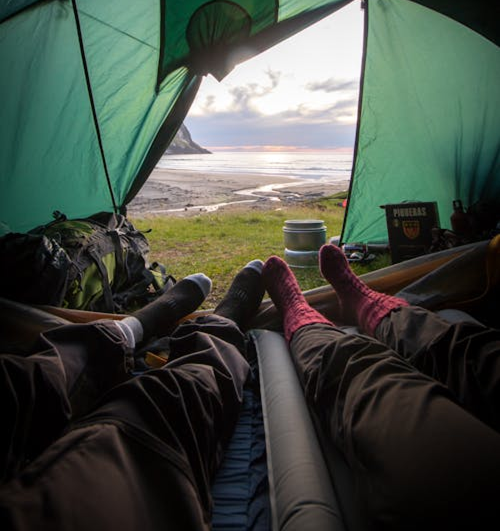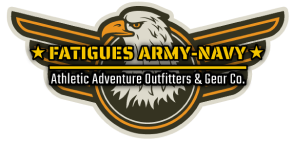How to Pack Your ALICE Pack, the Right Way
Posted by: Fatigues Army Navy Outdoor Gea on 8th Apr 2025
The ALICE pack served military personnel well through Vietnam and far beyond before it was ultimately replaced by the MOLLE system in 2001.
That said, it can still serve you well as a field pack, whether you’re backpacking, camping, paintballing, or just hiking. And while there might be better systems, you have to make use of what you have. If that’s an ALICE pack, so be it.
Besides, you can make a good thing great if you know how to use it properly, become aware of its advantages, and capitalize on them in appropriate fashion.
Case in point: if you use your ALICE pack for multi-day trips or other outings, knowing how to pack it properly will make your life a whole lot easier.
On that front, here are some important notices.
At the Bottom
From a high level, what you need to know about what to pack in the main compartment of your ALICE pack is that this is the first stuff that goes in, so it needs to be the least accessible. Also, you should make it the heaviest, bulkiest stuff that you only need to access once per day at most, if not less frequently than that.
As a result, the bottom of your ALICE pack should be loaded with the heavy, bulky items that you never need to draw at a moment’s notice - such as a second pair of shoes or spare clothing, or even boots. You can also use this portion of your pack for heavy items like cookware or percolators (if you are traveling with them) as well as heavy tools.
Placing heavy items at the bottom of the pack also ensures that the pack will be loaded evenly so that it will ride appropriately on your hips and lower back, without placing too much of a strain on your shoulders, neck or upper body.
If you are carrying a sleeping system such as a pad and sleeping back, the bottom of your pack is the place to store it. Alternatively, you can lash these to the outside of your pack (see below).
In the Middle
The middle of your ALICE pack is where you should pack essentials that, though you might need them during the course of the day or trip, you shouldn’t need immediate, unfettered access to them.
This includes items like light cookware, plates, mugs or utensils, along with food supplies, a stove, and spare water supplies.
Packing items like these in the middle of your pack, which are somewhat lighter in weight, but still not as immediately necessary as the stuff in the bottom of your pack, also helps to ensure that your pack is properly loaded, while saving the space at the top of the pack for items you might need at a moment’s notice.
At the Top

The top of your ALICE pack’s main compartment is where you should store two main categories of goods - the lightweight stuff, and things that you might need immediately, or at multiple points throughout the course of a day or trip.
Placing the essentials at the top of the pack ensures that you will have immediate and unfettered access to them effectively whenever you need, and packing the lights stuff at the top ensures that your pack won’t be top heavy, which in turn will make it easier and more comfortable to carry, for longer and with less fatigue.
Some important items that you might want to carry at the top of the pack include your rain jacket or poncho, a flashlight, hat or sunglasses (if you are not wearing them), bear spray, medical essentials, water or water filters, and first aid essentials. The top of your pack is also a good place to store a map and compass so they are readily accessible.
These items are all fairly lightweight and compact, and they offer a good representation of the things that you might need to access at multiple points throughout a single day, not just a trip.
However, since an ALICE pack is modular and has a variety of exterior compartments, there’s some flexibility with what things you carry in the pack and in the accessory pockets.
Outside Pockets
Since the ALICE pack has some exterior pockets, you can transfer some of the lighter equipment from the top of the pack to these pockets.
Some good candidates for the outside pockets include a canteen, flashlight, bear spray, first aid supplies, medicines, chapstick, lip balm, sunglasses, and orienteering and navigation equipment. You might also want to use these compartments to store tools like a knife or trowel.
They’re also good for storing your personal essentials like car keys, ID, and things like bug spray, since they are open and accessible. Using these pockets rather than stuffing everything you have into the main compartment will also help distribute the weight better while affording better overall access to more of what you’re carrying.
Lash-on and Loops
Here’s one of the big drawbacks to the ALICE system - unlike the MOLLE system, there aren’t a lot of attachment points for lashing or clipping on essentials to the outside, so ensuring fast, easy access.
That doesn’t mean you can’t get creative. While MOLLE packs might offer more attachment points, you can still get creative with a few carabiners and some paracord, lashing and clipping
That doesn’t mean you can’t get creative. While MOLLE packs might offer more attachment points, you can still get creative with a few carabiners and some paracord, lashing and clipping
on essentials to the outside of the pack for faster, easier access. Just make sure you attach them securely and you reserve this option for the most important items that you might need at a moment’s notice. Anything else is better stored inside the pack or one of its pockets or compartments.

Here for an ALICE Pack?
If you need to replace an aging pack that’s had its best seasons behind it, we have you covered. Take a look through our catalog; we carry ALICE packs and a whole lot more than that, including plenty of camping supplies and other equipment. Shop our full collection and get in touch with us if you still have questions.

